Order Cycadales Genus Zamia Higher classification Zamia | Scientific name Zamia integrifolia Rank Species | |
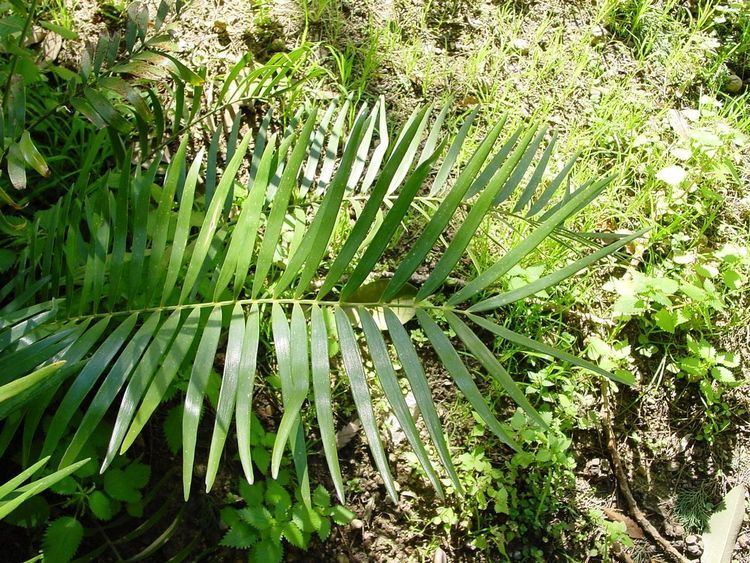 | ||
Similar Zamia, Zamia pumila, Cycad, Zamia furfuracea, Zamiaceae | ||
Toxic plant coontie root zamia integrifolia
Zamia integrifolia is a small, tough, woody cycad native to the southeast United States (Florida, Georgia), the Bahamas, Cuba, Grand Cayman and possibly extinct in Puerto Rico and Haiti.
Contents
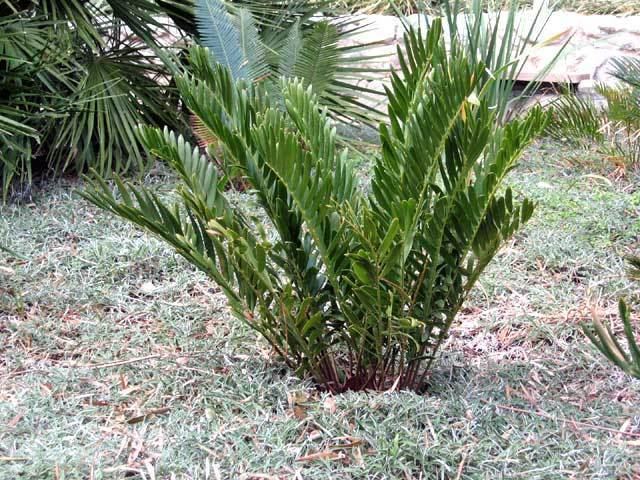
Zamia integrifolia produces reddish seed cones with a distinct acuminate tip. The leaves are 20–100 cm long, with 5-30 pairs of leaflets (pinnae). Each leaflet is linear to lanceolate or oblong-obovate, 8–25 cm long and 0.5–2 cm broad, entire or with indistinct teeth at the tip. They are often revolute, with prickly petioles. It is similar in many respects to the closely related Zamia pumila, but that species differs in the more obvious toothing on the leaflets.
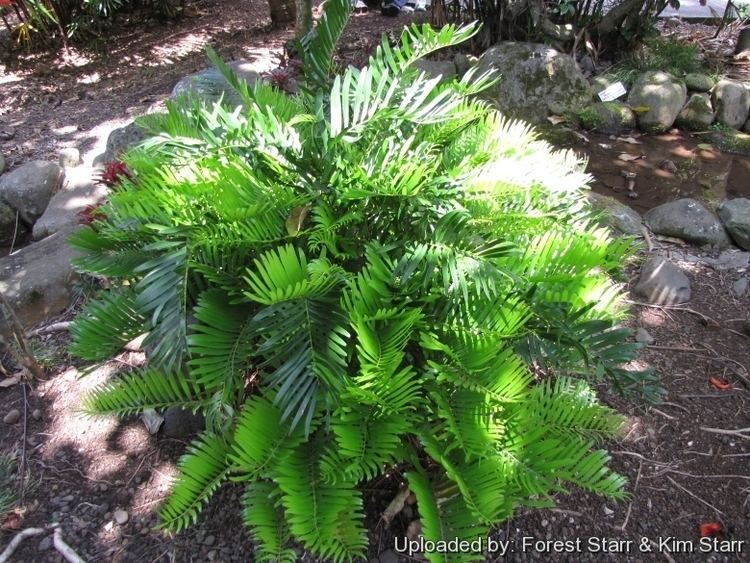
This is a low-growing plant, with a trunk that grows to 3–25 cm high, but is often subterranean. Over time, it forms a multi-branched cluster, with a large, tuberous root system, which is actually an extension of the above-ground stems. The leaves can be completely lost during cold periods, with the plant lying dormant in its tuberous root system, allowing this cycad to be relatively cold hardy. The plant can survive up to USDA region 8b (this can be quite northern: for instance, Seattle is 8b). The stems and leaves will regenerate after the cold period subsides with full foliage
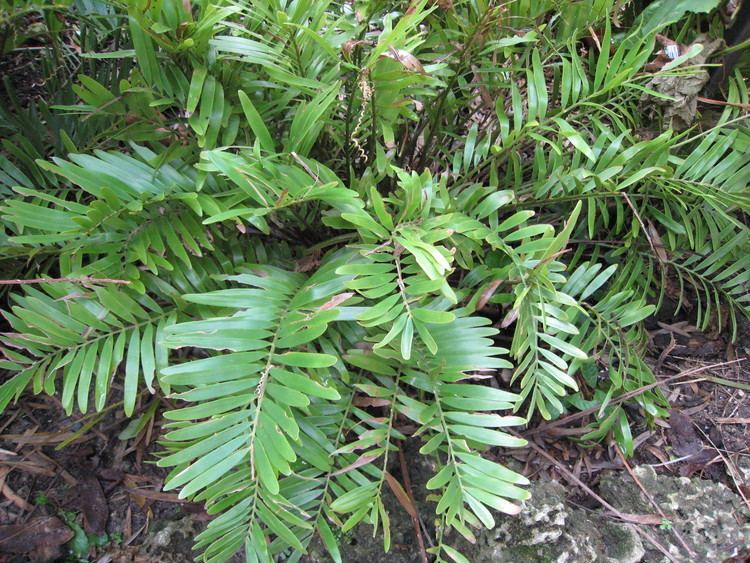
Like other cycads, Zamia integrifolia is dioecious, having male or female plants. The male cones are cylindrical, growing to 5–16 cm long; they are often clustered. The female cones are elongate-ovoid and grow to 5–19 cm long and 4–6 cm in diameter.
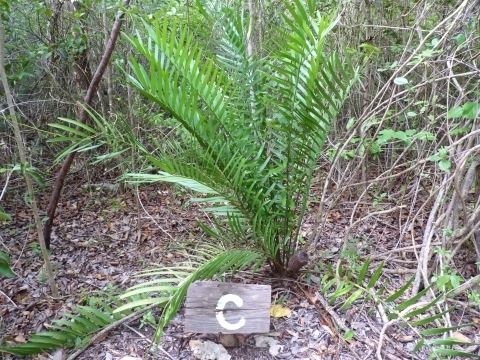
Common names
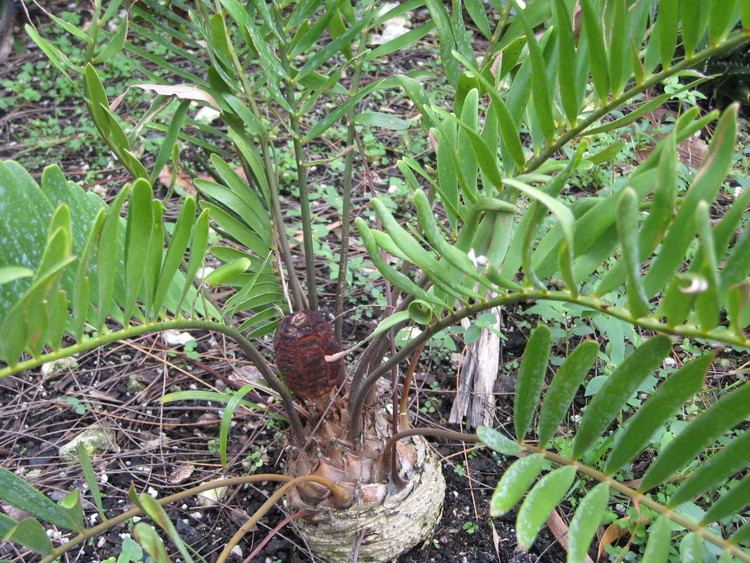
This plant has several common names. Two names, Florida arrowroot and wild sago, refer to the former commercial use of this species as the source of an edible starch. Coontie (or koonti) is derived from the Seminole Native American language conti hateka.
Ecology
Zamia integrifolia inhabits a variety of habitats with well-drained sands or sandy loam soils. It prefers filtered sunlight to partial shade. Populations are presently limited to Florida, southeastern Georgia, central Cuba and the Dominican Republic. It was also native in southern Puerto Rico and Haiti, but appears to have been extirpated from those areas due to intensive land use.
Controversy has long existed over the classification of Zamia in Florida; at one extreme all the American populations have been included in a broadly defined Zamia pumila and at the other several species have been recognized under various names (e.g., Z. augustifolia, Z. floridana, Z. silvicola, and Z. umbrosa). The Flora of North America treats all of the American populations as Z. integrifolia. Genetically, the differences between populations cannot be explained by habitat variability. Studies conducted by Ward showed that five different Florida populations of Z. integrifolia with identical cultivation produced distinct leaf morphology, suggesting that there may be too much genetic diversity amongst these Florida Z. integrifolia, not to mention geographically isolated populations, to consider them a single species.
The plant has critical importance to the Eumaeus atala butterfly. The butterfly, thought extinct until recently, is dependent for its survival on the Zamia integrifolia, as well as several other species of Zamia. At the larval stage, the Eumaeus atala caterpillar exclusively eats the leaves of the coontie. A half dozen caterpillars can completely strip a coontie bare and a large coontie population is needed to sustain the Eumaeus atala population.
All parts of Zamia integrifolia are toxic to humans if eaten raw, although Black Seminoles were known to strain it. Preparation of edible starch from the roots requires complex processing. All plant parts are poisonous to dogs and livestock.
